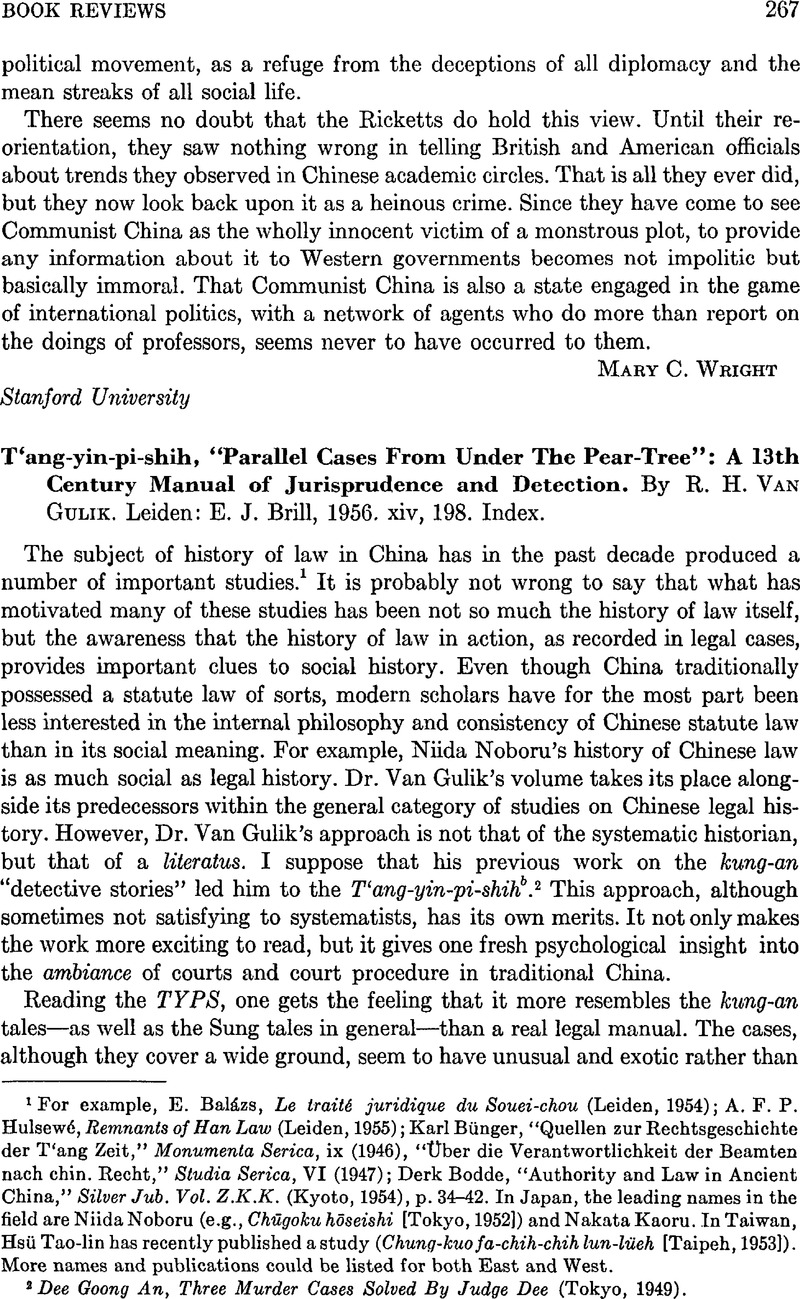No CrossRef data available.
Published online by Cambridge University Press: 23 March 2011

1 For example, Balázs, E., Le traité juridique du Souei-chou (Leiden, 1954)Google Scholar; Hulsewé, A. F. P., Remnants of Han Law (Leiden, 1955)Google Scholar; Büinger, Karl, “Quellen zur Rechtsgeschichte der T'ang Zeit,” Monumenta Serica, ix (1946)Google Scholar, “Über die Verantwortlichkeit der Beamten nach chin. Recht,” Studia Serica, VI (1947)Google Scholar; Bodde, Derk, “Authority and Law in Ancient China,” Silver Jub. Vol. Z.K.K. (Kyoto, 1954), p. 34–42Google Scholar. In Japan, the leading names in the field are Noboru, Niida (e.g., Chūgoku hōseishi [Tokyo, 1952])Google Scholar and Kaoru, Nakata. In Taiwan, Hsu Tao-lin has recently published a study (Chung-kuo fa-chih-chih lun-liieh [Taipeh, 1953])Google Scholar. More names and publications could be listed for both East and West.
2 Dee Goong An, Three Murder Cases Solved By Judge Dee (Tokyo, 1949)Google Scholar.
3 There is a slight misunderstanding of the text here (p. 189).
4 Sung-pen ming-kung shu-p'an ch'ing-ming-chi (Hsü ku-i ts'ung-shu ed.). For a critical analysis, see Noboru, Niida, “Sei-mei-shū kō-kon-mon no kenkyū” Toho gakuho (Tokyo), IV (1933), 115–189Google Scholar.
5 Ibid., p. 119.
6 “Gen-ten-shō kei-bu no kenkyū” Tōhō gakuhō, XXIV (1954), 1Google Scholar.